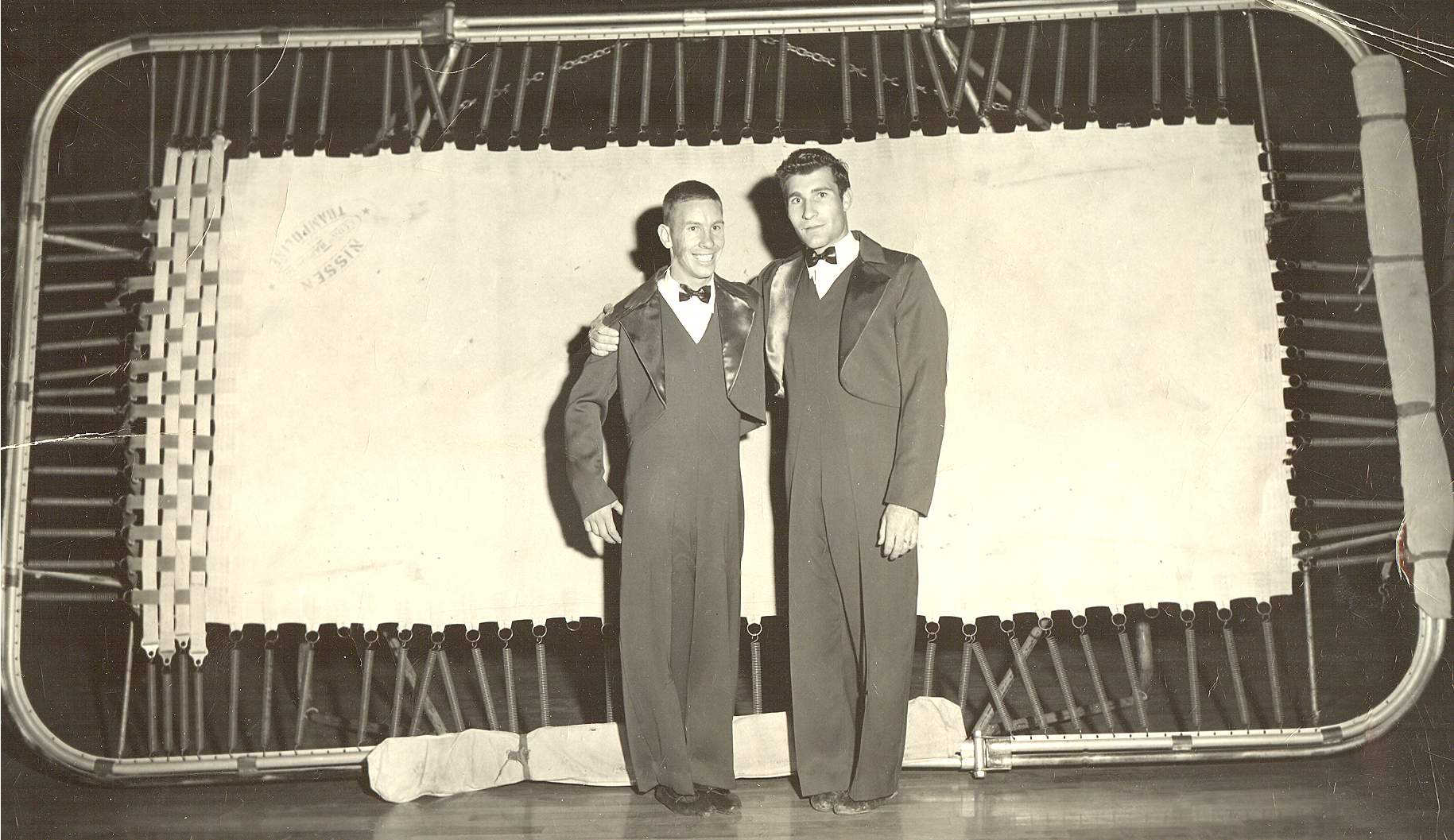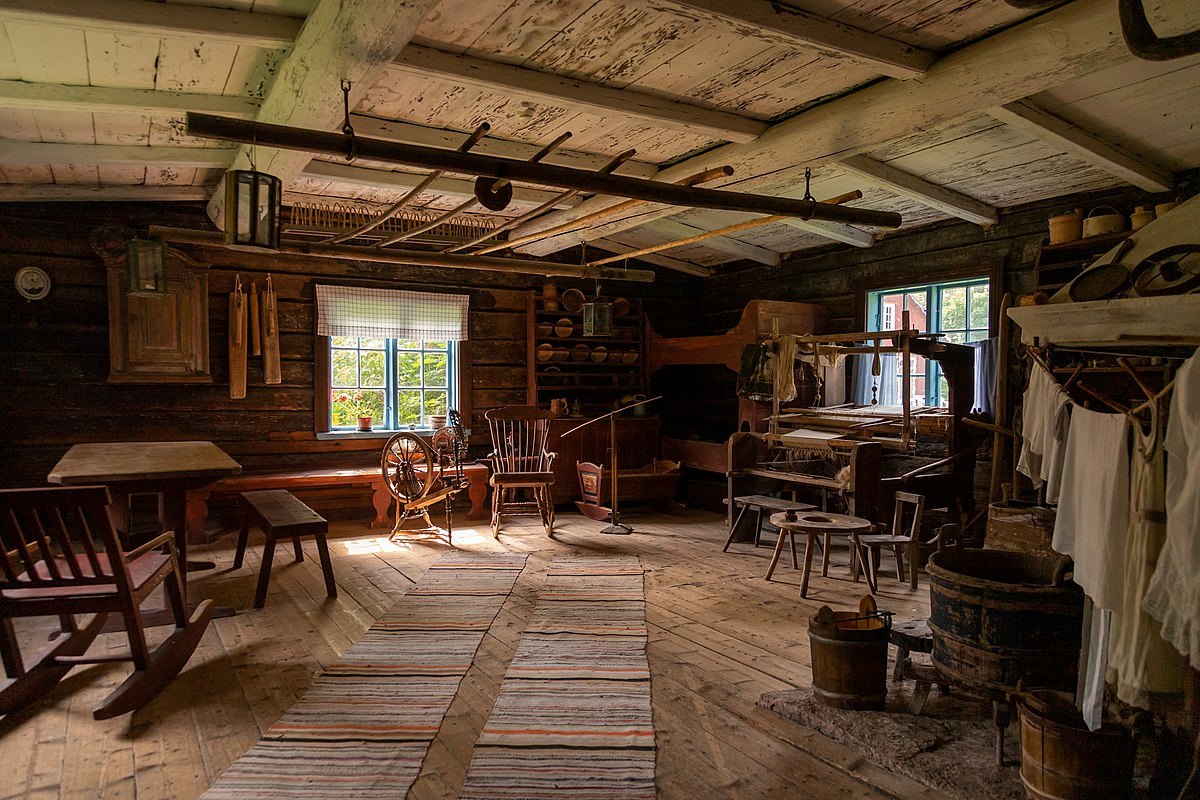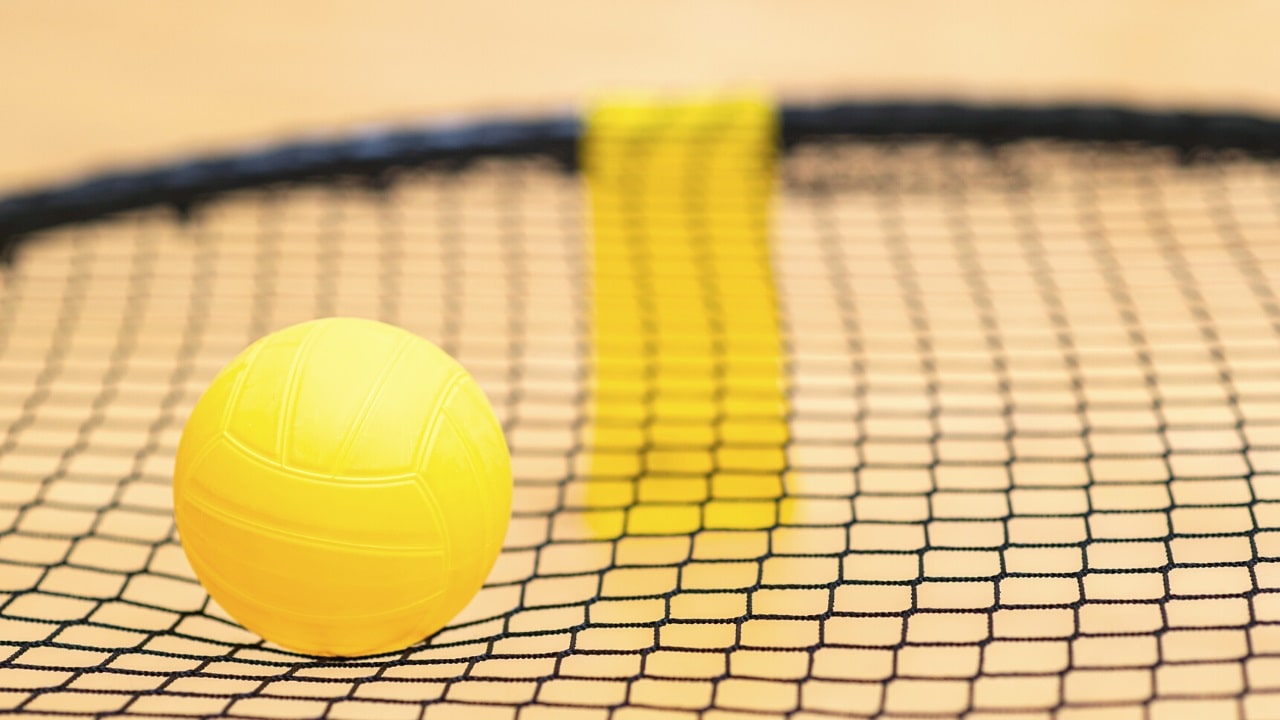Home>Gardening & Outdoor>Outdoor Recreation & Activities>Who Invented The Trampoline


Outdoor Recreation & Activities
Who Invented The Trampoline
Modified: January 4, 2024
Learn about the history of the trampoline and its inventor. Discover the origins of this popular outdoor recreation and activity.
(Many of the links in this article redirect to a specific reviewed product. Your purchase of these products through affiliate links helps to generate commission for Storables.com, at no extra cost. Learn more)
**
Introduction
**
Welcome to the fascinating world of trampolines! These bouncy contraptions have been a source of joy and excitement for people of all ages, providing endless entertainment and a unique way to stay active. But have you ever wondered about the origins of the trampoline? Who came up with the idea of bouncing on a taut piece of fabric suspended by springs?
In this article, we'll delve into the history of the trampoline, exploring its early origins, the modern developments that led to its widespread popularity, and the evolution of trampolines into the beloved recreational and fitness equipment we know today. So, let's bounce right in and uncover the captivating story behind the invention of the trampoline!
Key Takeaways:
- The trampoline was invented by George Nissen and Larry Griswold in 1937, revolutionizing recreational and fitness activities with its unique bouncing experience.
- Trampolines have evolved from ancient blanket tossing to modern-day competitive sports, indoor parks, and interactive models, offering diverse and exhilarating experiences for all.
Read more: Who Invented The Stairs
Early Origins of the Trampoline
The concept of using elasticity to propel the human body into the air dates back centuries. In fact, the origins of the trampoline can be traced to ancient civilizations that recognized the exhilarating sensation of bouncing on flexible surfaces. One such example is the Inuit people, who engaged in blanket tossing as a form of entertainment and celebration. This tradition involved multiple individuals holding the edges of a large blanket and propelling someone into the air, simulating the experience of bouncing.
Fast forward to the 20th century, and the trampoline as we know it began to take shape. In the 1930s, American gymnast George Nissen observed trapeze artists using a safety net to perform daring aerial stunts. Inspired by this, Nissen, along with his coach Larry Griswold, developed the modern trampoline using a piece of canvas stretched taut with coiled springs to create the necessary rebounding effect.
Their innovative design paved the way for the commercialization of trampolines, and in 1937, Nissen and Griswold filed a patent for their “tumbling device.” This marked a significant milestone in the history of trampolines, signaling the transition from a simple recreational activity to a structured piece of equipment with diverse applications.
As the trampoline gained recognition in the sports and fitness realms, it also found its place in military training. During World War II, the United States Navy Flight School utilized trampolines to train pilots and navigators in spatial orientation and aerial awareness. The effectiveness of trampolines in honing balance, coordination, and reflexes further solidified their place in both recreational and professional settings.
With its humble yet adventurous origins, the trampoline continued to soar in popularity, captivating enthusiasts and athletes alike with its unique blend of exhilaration and physical prowess.
Modern Development and Patent
Following the filing of the patent for the “tumbling device” in 1937, George Nissen and Larry Griswold embarked on a journey to refine and popularize their invention. Their efforts led to the establishment of the Griswold-Nissen Trampoline & Tumbling Company, which became a pioneering force in the production and distribution of trampolines.
Throughout the mid-20th century, trampolines underwent significant advancements in design and construction. The introduction of durable nylon fabrics and improved spring systems enhanced the safety and performance of trampolines, making them more accessible to a wider audience. As a result, trampolines found their way into recreational spaces, gymnastics training facilities, and even backyard setups, captivating thrill-seekers and fitness enthusiasts alike.
One of the most notable developments in the history of trampolines occurred in 1962 when NASA incorporated trampolining into its astronaut training program. The space agency recognized the value of rebounding exercises in simulating the low-gravity conditions of space, providing astronauts with a unique way to condition their bodies for the challenges of space travel. This endorsement from NASA catapulted trampolines into the spotlight, solidifying their reputation as a versatile and effective training tool.
As trampolines gained widespread recognition, safety standards and regulations became paramount. Organizations such as the International Trampoline Federation (FIT) and the American Society for Testing and Materials (ASTM) played crucial roles in establishing guidelines for trampoline design, usage, and maintenance, ensuring the well-being of users and promoting responsible trampolining practices.
Furthermore, the evolution of trampolines extended beyond traditional recreational models, giving rise to innovative variations such as water trampolines and mini trampolines designed for indoor use. These adaptations expanded the appeal of trampolines, offering unique experiences for water-based activities and compact fitness routines.
With the continued advancements in materials, engineering, and safety measures, trampolines have evolved into a versatile and enduring fixture in the realms of sports, fitness, and leisure, captivating enthusiasts with their boundless potential for exhilaration and physical expression.
The trampoline was invented by George Nissen and Larry Griswold in 1936. They were inspired by trapeze artists using a safety net to bounce and perform stunts.
Evolution of Trampolines
The evolution of trampolines has been a dynamic journey marked by innovation, diversification, and a steadfast commitment to safety and performance. From its humble beginnings as a simple tumbling device to its widespread presence in recreational, fitness, and professional settings, the trampoline has continually adapted to meet the evolving needs and preferences of enthusiasts and athletes.
One notable aspect of the trampoline’s evolution is its integration into competitive sports and gymnastics. Trampolining emerged as a distinct discipline within artistic gymnastics, captivating audiences with its awe-inspiring displays of aerial acrobatics and precise, gravity-defying maneuvers. The inclusion of trampolining in international sporting events, such as the Olympic Games and World Championships, elevated its status and visibility, inspiring a new generation of aspiring trampolinists and showcasing the athleticism and artistry inherent in the sport.
Beyond traditional trampolining, the evolution of trampolines has seen the emergence of innovative variations tailored to specific activities and environments. Water trampolines, for instance, have become a popular feature in aquatic recreational settings, providing a buoyant platform for playful bouncing and aquatic adventures. Their buoyant, inflatable designs make them ideal for lakes, ponds, and other water bodies, offering a unique blend of bouncing excitement and refreshing aquatic fun.
Indoor trampolining parks have also surged in popularity, offering expansive facilities equipped with interconnected trampolines, foam pits, and creative obstacle courses. These indoor playgrounds provide a safe and exhilarating environment for individuals and families to engage in freestyle bouncing, aerial maneuvers, and interactive challenges, fostering a vibrant community of trampoline enthusiasts and thrill-seekers.
Furthermore, the integration of technology has influenced the evolution of trampolines, giving rise to interactive and immersive experiences. Trampolines equipped with integrated sensors and digital interfaces offer interactive games, fitness routines, and augmented reality experiences, adding an engaging and dynamic dimension to traditional trampolining activities.
As the demand for sustainable and eco-friendly recreational options grows, the development of solar-powered trampolines and eco-conscious materials underscores the industry’s commitment to environmental responsibility and innovation.
Through these diverse adaptations and advancements, trampolines have evolved into versatile and engaging platforms that cater to a wide spectrum of interests, from competitive sports and fitness training to leisurely recreation and immersive entertainment. The evolution of trampolines continues to reflect the enduring appeal of bouncing, soaring, and defying gravity, captivating enthusiasts with its boundless potential for exhilarating experiences and physical expression.
Conclusion
The trampoline, with its rich history and dynamic evolution, stands as a testament to human ingenuity, creativity, and the enduring pursuit of exhilarating experiences. From its ancient roots in blanket tossing to the modern-day arenas of competitive sports, recreational parks, and fitness facilities, the trampoline has transcended boundaries, captivating individuals of all ages and backgrounds with its unique blend of excitement and physical expression.
The early origins of the trampoline, rooted in ancient traditions and inventive experimentation, laid the foundation for its transformation into a structured and versatile piece of equipment. The pioneering efforts of George Nissen and Larry Griswold, culminating in the filing of the trampoline patent in 1937, marked a pivotal moment in the history of this beloved apparatus, setting the stage for its widespread adoption and diverse applications.
As trampolines underwent modern development and refinement, they found their place in a myriad of settings, from recreational backyards to professional training facilities. The integration of trampolining into astronaut training programs by NASA underscored its value as a tool for physical conditioning and spatial awareness, further elevating its status and appeal.
The evolution of trampolines has been characterized by innovation and diversification, giving rise to specialized variations such as water trampolines, indoor trampoline parks, and interactive, technology-enhanced models. These adaptations have expanded the horizons of trampolining, offering new avenues for playful bouncing, artistic expression, and immersive experiences.
As we look to the future, the trampoline continues to inspire and captivate, serving as a symbol of boundless joy, physical prowess, and the enduring spirit of adventure. Its evolution reflects a commitment to safety, performance, and environmental responsibility, ensuring that enthusiasts can continue to experience the thrill of bouncing and soaring while embracing sustainable and engaging recreational options.
Whether it’s the exhilaration of a perfectly executed aerial maneuver, the laughter of children bouncing in unison, or the sense of weightlessness experienced in mid-air, the trampoline holds a timeless allure, inviting individuals to defy gravity and embrace the sheer joy of movement. As we celebrate the remarkable journey of the trampoline, we are reminded of the enduring magic found in the simple act of bouncing, transcending time and space to ignite the spirit of adventure within us all.
Frequently Asked Questions about Who Invented The Trampoline
Was this page helpful?
At Storables.com, we guarantee accurate and reliable information. Our content, validated by Expert Board Contributors, is crafted following stringent Editorial Policies. We're committed to providing you with well-researched, expert-backed insights for all your informational needs.
















0 thoughts on “Who Invented The Trampoline”